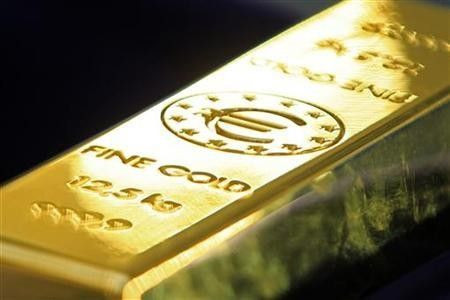Gold firms a touch, eyes on debt talks

Gold firmed a touch on Thursday, lifted by concerns over a potential U.S. debt default as lawmakers in Washington argued over deficit-cutting measures, and lingering fears that the euro zone debt crisis could spread.
Prices briefly rose above $1,620 an ounce, but quickly steadied after a U.S. government report showing jobless claims fell more than expected last week, which took some of the heat out of risk aversion.
Spot gold was up 0.1 percent at $1,614.90 an ounce at 1312 GMT (9:12 a.m. EDT). It hit a record $1,628 an ounce on Wednesday, its second session at all-time highs this week, before correcting sharply later in the day.
A bill to cut the U.S. deficit faces a nail-bitingly close vote in Congress on Thursday as the top Republican lawmaker, House of Representatives Speaker John Boehner, sought to quell an internal revolt and push his plan forward.
An agreement to cut the deficit is needed before lawmakers will agree to raise the U.S. debt ceiling. If it does not do so, the world's largest economy will run out of money to pay its bills in less than a week.
"The closer we get to the possibility that no agreement will be reached, that will drive the gold price higher," said VM Group analyst Carl Firman. "If this continues over the weekend, Monday could see very hefty gains."
"I believe they will reach an agreement, and then some profits will be shaved off the gold and the silver markets," he added. "However, I don't think that will be the end of the gold rally. These will be the temporary measures, they will just push the problem further forward. Gold has a long way to go."
The dollar recovered early losses to rise 0.4 percent against a basket of six major currencies, while U.S. long-dated Treasuries hit session highs.
The euro fell, Italian government bond yields rose and Bund futures hit a session high as edgy markets turned to safe-haven assets after an Italian debt auction and as little progress emerged from Washington.
U.S. gold futures for August delivery were up 40 cents an ounce at $1,615.60.
"As we draw closer to the Treasury's August 2 deadline for raising the debt ceiling, there's a rising likelihood of a rushed, short-term fix that essentially kicks the problem further into the future," said UBS in a note.
"This is likely to prompt the market to price in a higher risk of a credit ratings downgrade. The spread between 10-year German bunds and U.S. 10-year (Treasuries) widened the most in over five months yesterday."
SOUTH AFRICAN GOLD MINERS STRIKE
On the supply side of the market, tens of thousands of South African gold miners will stop work on Thursday, adding to a wave of strikes and potentially costing the gold mining sector $25 million a day in lost output.
The impact of supply outages -- particularly short-term ones -- on gold is usually fairly soft, given the availability of above-ground stocks of the metal relative to other commodities. However, the strike could give more of a lift to platinum prices if it spreads to that sector.
Markets will be closely watching the outcome of talks between the unions and Anglo American Platinum, the world's number one producer of the precious metal.
"Even the threat of a strike sends a signal to investors that it is more dangerous to be short platinum, and that will in itself be supportive of prices," said Mitsui Precious Metals analyst David Jollie.
Around four in every five ounces of platinum is sourced in South Africa, so supply disruptions in the republic have a significant effect on metals prices. South African supply outages were a major factor driving platinum to a record $2,290 an ounce in early 2008.
Spot platinum was up 0.2 percent at $1,788.74, while spot palladium was up 0.5 percent at $826.97. Silver was down 0.2 at $40.09 an ounce.
© Copyright Thomson Reuters {{Year}}. All rights reserved.





















